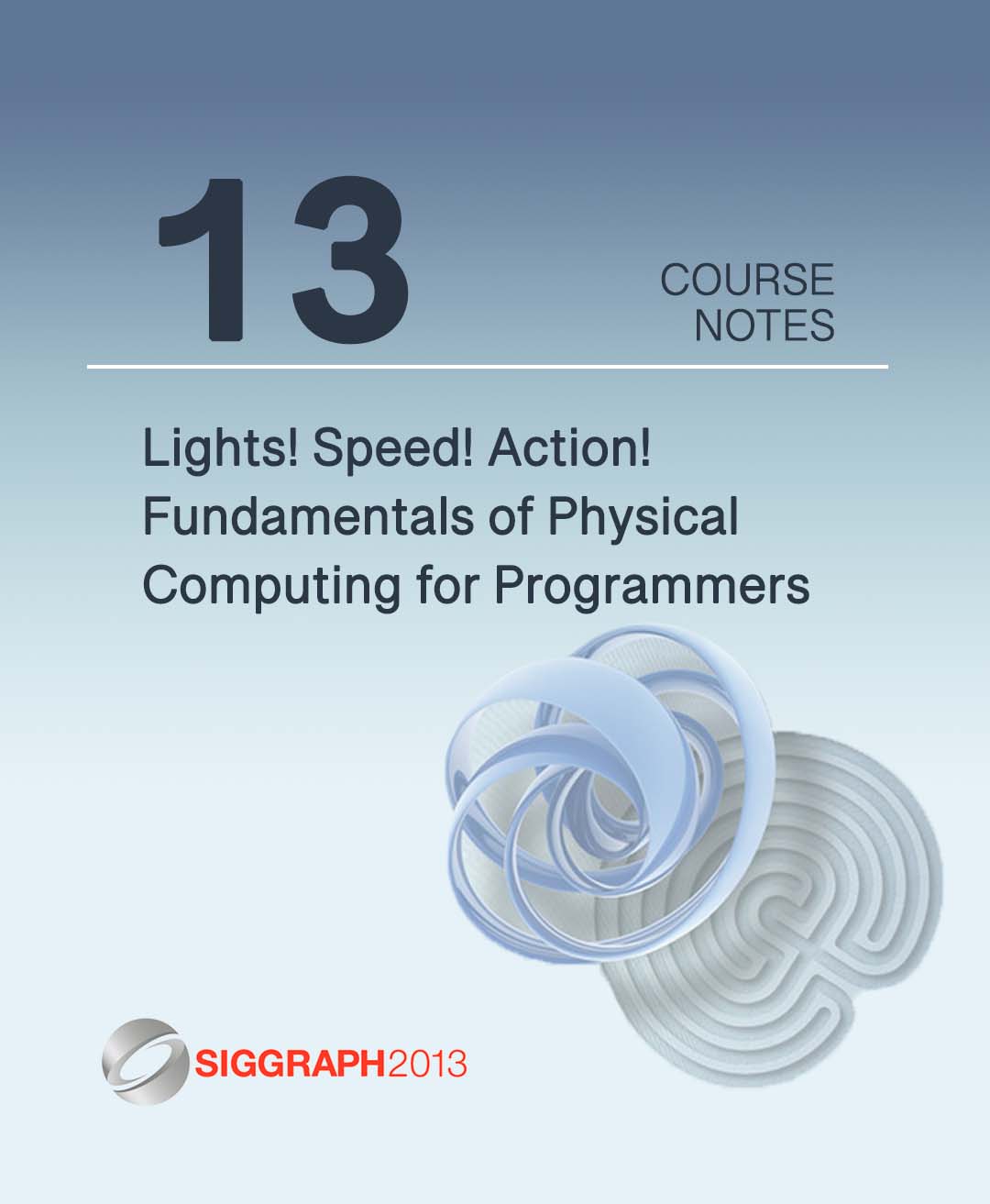“Lights! Speed! Action! Fundamentals of Physical Computing for Programmers” by Brunvand
Conference:
Type(s):
Title:
- Lights! Speed! Action! Fundamentals of Physical Computing for Programmers
Organizer(s):
Presenter(s)/Author(s):
Entry Number: 13
Abstract:
Abstract
The definition of computer graphics as used by artists in new media and kinetic areas of the arts is much more expansive than simply rendering to a screen. A visit to the SIGGRAPH art gallery, for example, will showcase a wide variety of uses of physical computing, embedded control, sensors, and actuators in the service of art. This course is for programmers, educators, artists and others who would like to learn the basic skills and intuition necessary to incorporate physical components into their computing systems. The course is targeted at programmers with little or no electronics background. We start with basic electronics concepts as they are used with these components. We then cover a variety of sensors that provide information about the physical environment (light, motion, distance from objects, flex, temperature, etc.), programmer-controlled lights (LEDs), and programmer controlled motion (servos, motors). We will describe the use of these components in the context of the Arduino microcontroller, but the skills learned will be general and should transfer easily to a variety of other computing platforms. Although there will be a few simple formulas in this material, the strong focus will be on practical usage and common sense applications in real circuits. In fact, for those physicists in the audience, there are places where a common-sense or rule-of-thumb description will be used that may not be completely accurate in terms of electrostatic or quantum mechanical reality. Please take these models for what they are: intuitive descriptions that help understand the situation in practice, even though they may gloss over some second order effects. After taking this course you should feel more comfortable in selecting, wiring, using, interfacing, and controlling a variety of simple physical computing components. Following a few simple rules of thumb, and knowing what questions to ask, should keep you from blowing up too many components. These physical computing components can allow you to add physical computer graphics to your repertoire. That is, real, physical machines controlled by computers that make graphical marks!





